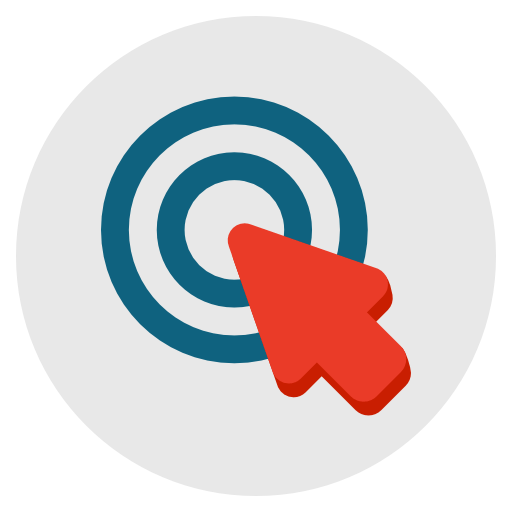8 easy steps to plan a good website

You have an idea to change the world as we know it. Being successful requires you to maintain a top level online presence.
You. Need. A. Good. Plan.
Planning your website ahead of time gives you a clear direction. It guarantees a positive reaction among your audience and helps you build loyalty in your community. Follow this 8-step guide to create an online strategy that gets you results.
Download the make your website e-book
1. Identify your purpose
What is the goal of your website? Build the entire structure to correspond to your mission. Here are some possibilities:

- Information
- Sales
- Recruitment
- Create a community
- Call to action
Now ask yourself what your target audience is and what they respond to. Would your overall content, images and fonts correctly correspond to what your customers expect to find on your website? A well-defined purpose of your website will provide visitors with a reason to stay and to learn and do more.
2. Budget
 Your website is the digital representation of your business. Determining the budget for its maintenance depends on how professional you want it to look like. And what functionality it should contain. One key rule: keep it simple and stick to what you really need.
Your website is the digital representation of your business. Determining the budget for its maintenance depends on how professional you want it to look like. And what functionality it should contain. One key rule: keep it simple and stick to what you really need.
The complexity, the look, the scope and the need of maintenance all add up to the overall cost. Updating your blog regularly or creating impressive videos for your homepage are worth considering to achieve dynamics. But there are certain features that no website can go without. Web design, content creation, programming and hosting are services on the list that you surely need to take into account. Talk to a specialist early on to get ideas and quotes.
3. Prioritize your content
Creating engaging content is crucial for the success of your website. It involves everything that gives your visitors information about you and your service. Here is what you need to include in your content:
Add but do not limit yourself to: product information, extensive and consistent imagery, blog posts, and social media feeds. Words are your number one weapon, so make a clever use of them. Do not be wasteful. Create powerful copy that will influence buyer behavior and stimulate action in your audience.
Focusing on visual content is important. A study shows that displaying a relevant image to an informative paragraph makes visitors retain 65% of the information three days later. Do not shy away from adding an interactive element such as virtual tours.
4. Plan a good website
You have identified your main goal already. Build around it. Feel free to edit and customize if you are sure it fits your purpose. However, start from the basics your audience may expect to see:
Home page, Product page, About Us page (when applicable), Blog (when applicable) and Contact us page are a regular.
N.B! Statistics show that 47% of website visitors check out a company's products/services page before looking at any other section of the site. The product page represents the core of your business so put extra effort into its advertisement.
5. Mock
A good website frame maintains a positive image in users and raises sales. It ensures a more realistic experience with your products and services. So, what do you need to know to create the perfect mockup for your website?

Sketches are a great way to brainstorm. Wireframes display how your website works, not how it looks. Do not put much emphasis on details at that stage. Arrange wireframe elements in a way so as to introduce the visual hierarchy of pages, interaction of elements and content distribution.
Use popular tools like Balsamiq, Axure, Proto.io, InVision to create your website mock-up. All versions are paid, but they offer free trials. Explore and choose what works for you. They will help you include various features and widgets and allow you to add functionality to your layout.
6. Lay it out
Develop. It is time for details. Nothing catches the visitor’s eye as well as an outstanding design. Fonts, layout, colors, author photo thumbnails – all of this makes the content accessible to the vast audience. To draw visitors to your website, keep in mind some basic design concepts.
Colors increase web recognition by 80%. Make key information on your website stand out. Keep styles and colors consistent across your pages. Let your background contrast your text color and keep your website logo and tag line visible.
Since mobiles now account for nearly 2 of every 3 minutes spent online, users must be able to see your website through various devices. Pursue responsive design to fit all screen sizes. Make sure all the text is visible and images show well.
7. Final check and launch
 Before you officially launch your website, you need a guarantee that it runs smoothly and will not let down your users. At a minimum test if images load appropriately and links take you to the pages they are supposed to.
Before you officially launch your website, you need a guarantee that it runs smoothly and will not let down your users. At a minimum test if images load appropriately and links take you to the pages they are supposed to.
At a minimum test using desktop browsers like Chrome, Safari, Firefox, Opera and Edge and with mobile web browsers like Safari, Chrome, and Opera Mini.
8. Improve
Your website may be up and ready, but your work is not finished. As your audience grows, the need for a website upgrade increases. Work on a plan for the future maintenance of your website. If your goals or priorities change, your website strategy should adapt.
Do not go crazy. 47% of web users expect a web page to load in two seconds or less. As your content grows, you may need to change the rules for how often or what you publish on your site to preserve the quality. Light websites load quicker so invest in an improved digital content that will prevent your website from unexpected delays.
Conclusion
A well-panned website not only makes you stand out among competitors, it generates more leads and retains users. With your website plan complete, you are off to a good start as a digital success.


